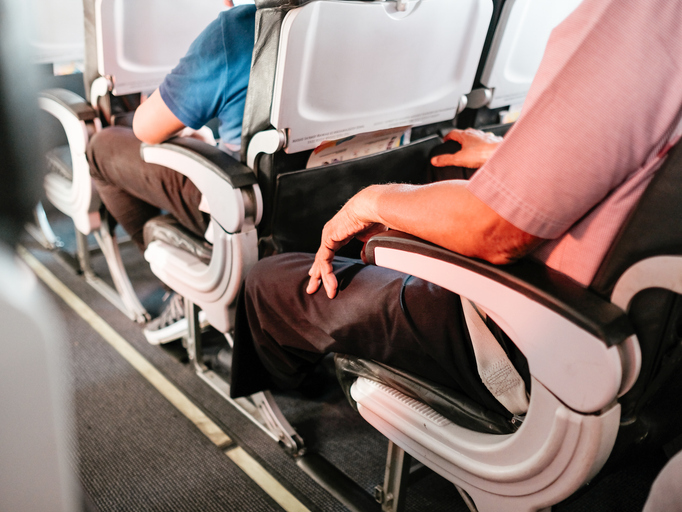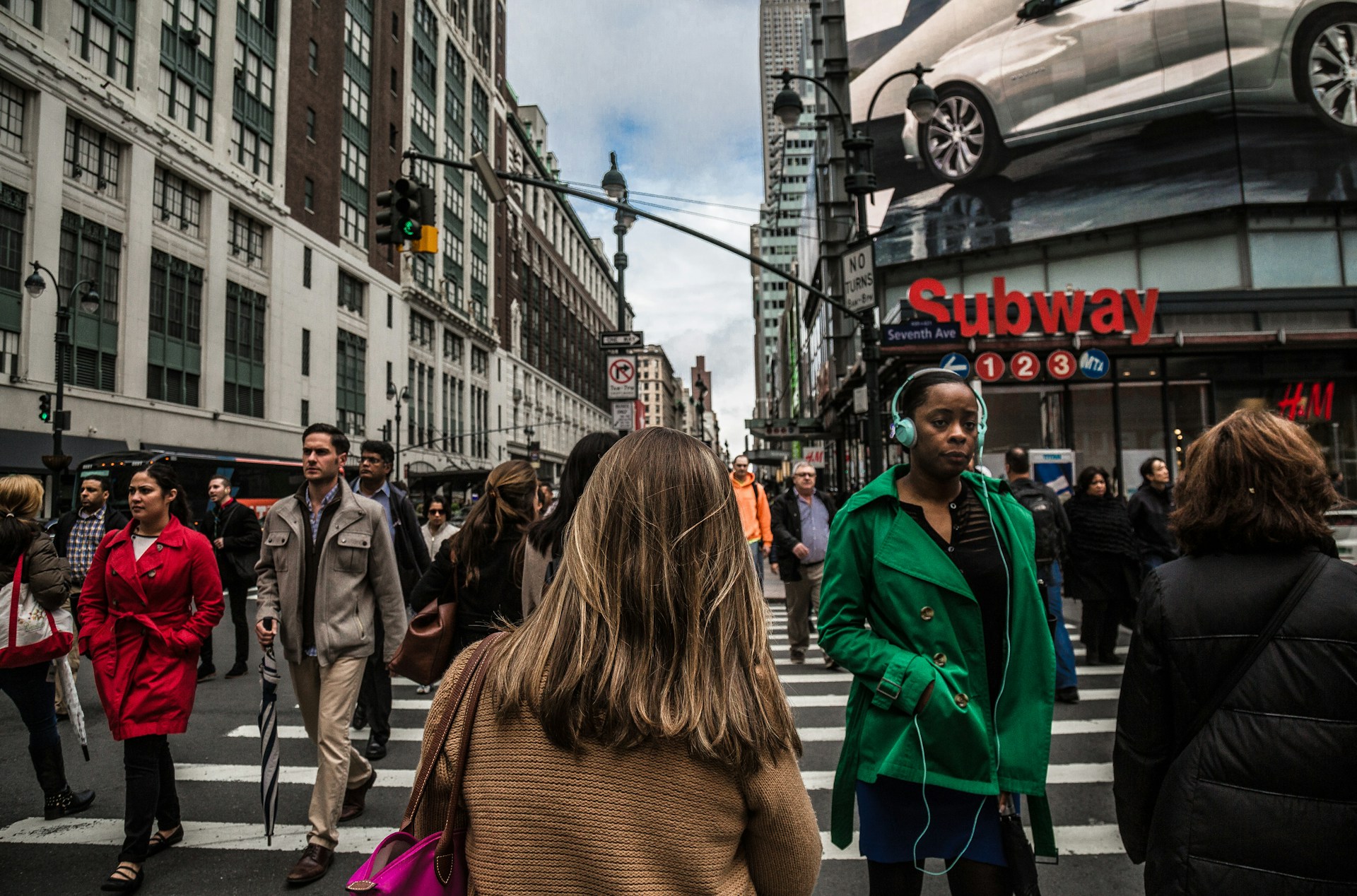How To Make Flying Economy A Little Less Painful
 Getty Images
Getty Images Flying economy is a right pain in the backside, especially if you’re on a long-haul flight. (However, let’s be honest, even making it to Spain is a torturous affair!) Cramped seats, dodgy food, and enough leg room for a hobbit aren’t exactly a recipe for a jolly good time. But before you resign yourself to hours of misery at 30,000 feet, hold your horses. There are actually a few ways to make your economy experience a bit less grim if upgrades don’t exist or aren’t in your budget. Here are a few that have worked for me.
1. Your seat choice could make or break your flight.
Don’t just leave your seat to chance. If you’re after extra legroom, aim for the emergency exit rows or the first row behind the bulkhead. Just fancy a bit of peace and quiet? The front of the plane tends to be less noisy. And if you’re prone to a bit of motion sickness, stick to the middle of the plane over the wing where it’s more stable. Most airlines let you choose your seat when you book, or you can give them a bell closer to the flight. It might cost you a few quid extra, but it could be worth it for a more comfortable journey.
2. Your carry-on bag is your in-flight survival kit.
Think of your carry-on as your personal comfort station at 35,000 feet. Pack it wisely, and you’ll be sorted for whatever the flight throws at you. Chuck in a cosy jumper or a light blanket — planes can get chilly (though they can also be infernos, so you’ll need layers you can easily remove). A decent pair of noise-cancelling headphones can be a godsend for drowning out that screaming baby three rows back. Plus, don’t forget your Stanley or other refillable water bottle (fill it up after security), some snacks (in case the in-flight grub is bad, if it exists at all), and a good book or iPad. Oh, and always pack a change of pants and a toothbrush in your carry-on. You’ll thank yourself if your luggage decides to take an extended holiday without you.
3. Your pre-flight routine is important, too.
What you do before you even set foot on the plane can make a world of difference. Start by wearing comfy clothes — think loose-fitting trousers and those aforementioned layers you can easily add or remove. If you’re on a long-haul flight, consider having a proper meal before you board. Airline food isn’t exactly Michelin star quality, and eating a decent meal beforehand means you’re not relying on it. Better yet, plan to arrive where you’re going hungry — that’s what Anthony Bourdain swore by, and I’m inclined to follow his lead. Also, try to get to the airport with plenty of time to spare. Being in a mad rush to catch your flight is a guaranteed way to start your journey stressed out. Give yourself time for a cuppa and a breather before boarding. You’ll be amazed at how much calmer you’ll feel when you’re not legging it to the gate.
4. Your sleep strategy can make long flights more bearable.
Catching some shut-eye on a plane can be trickier than solving a Rubik’s cube blindfolded, but it’s not impossible. First off, invest in a decent travel pillow — those flimsy airline ones are about as useful as a chocolate teapot. An eye mask and earplugs (or those noise-cancelling headphones I mentioned earlier) can help block out light and noise. If you’re on a night flight, try to stick to your usual bedtime routine as much as possible. Brush your teeth, read a bit, whatever you normally do to wind down. And don’t be shy about asking the flight attendants not to wake you for meals if you’re trying to sleep. A bit of kip can make even the longest flight zip by.
5. Your in-flight entertainment choices can pass the time.
Gone are the days when you were stuck with whatever rubbish film they decided to show on that tiny shared screen. These days, most long-haul flights offer personal entertainment systems with a decent selection of films, TV shows, and games. But don’t put all your eggs in one basket — always have a backup plan. Load up your phone or tablet with downloaded shows from Netflix or your favourite podcasts. Bring a good book or your Kindle. If you’re feeling social, some airlines even offer seat-to-seat chat functions, so you can natter with your travel companions without shouting across the aisle. The key is to have options — you don’t want to be stuck twiddling your thumbs for hours on end.
6. Your hydration habits can make a huge difference.
Flying can leave you feeling as dry as a bone. The low humidity in plane cabins can lead to dehydration, which can make you feel proper rough. So, make it your mission to stay hydrated. Bring that refillable water bottle I mentioned earlier and don’t be shy about asking the flight attendants to top it up. Try to avoid too much caffeine and alcohol, as tempting as that G&T might be — they’ll only dehydrate you more. And don’t forget about your skin. A small bottle of moisturiser or a hydrating face mist can work wonders for keeping your skin from feeling like sandpaper. Your body will thank you when you land feeling somewhat human instead of a dried-out husk.
7. Your stretching routine can save you from stiffness.
Sitting still for hours on end can leave you feeling stiff, but you don’t have to resign yourself to feeling like the Tin Man. Every hour or so, try to do some simple stretches in your seat. Rotate your ankles, roll your shoulders, and give your neck a good stretch. If you’re feeling brave, you can even do some seated yoga poses. For longer flights, make sure you get up and walk around when it’s safe to do so. A stroll to the loo or just up and down the aisle can get your blood flowing and help prevent deep vein thrombosis. Yes, you might get a few odd looks, but it’s better than arriving at your destination feeling like you’ve aged 50 years.
8. Your attitude towards turbulence can make it less scary.
Turbulence can turn even the most seasoned traveller into a nervous wreck. But here’s the thing — it’s completely normal and rarely dangerous. Think of it as the aerial equivalent of driving over a bumpy road. To make it less terrifying, try some deep breathing exercises when things get choppy. Focus on something else, like your book or the in-flight entertainment. And remember, the pilots deal with turbulence all the time — they’re not fazed by it, so you shouldn’t be either. If you’re really struggling, don’t be afraid to chat to the flight attendants. They’re used to dealing with nervous flyers and can often provide reassurance. Remember, in all likelihood, the worst thing that’ll happen is your drink might spill.
9. Being prepared for jet lag can make your arrival easier.
If you’re crossing time zones, jet lag can be a right pain in the neck, but there are ways to minimise its impact. Start adjusting your sleep schedule a few days before your flight to match your destination’s time zone. During the flight, set your watch to your destination’s time and try to sleep when it’s nighttime there. When you land, try to stay awake until the local bedtime, even if you’re knackered. Get outside in the sunlight if you can — it’ll help reset your body clock. And while it’s tempting to have a kip as soon as you arrive, try to limit any naps to 20 minutes max. It might be a bit rough for the first day or two, but you’ll adjust quicker in the long run.
10. Your mindset can transform your economy experience
I’m not going to pretend that flying economy is suddenly going to become a luxury experience, but your attitude can make a massive difference. Try to focus on the excitement of your destination rather than the discomfort of the journey. Be polite to the flight attendants — a smile and a “thank you” can go a long way, and they might be more inclined to help if you need anything. And remember, everyone’s in the same boat (or plane, rather). Yes, it might be a bit cramped and uncomfortable, but you’re literally flying through the air to somewhere new. How amazing is that?





